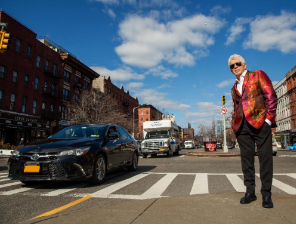The Wolfsonian–FIU Celebrates Authors and Artists of the Harlem Renaissance

Silhouettes, now on view through June 23, 2024, explores the literary and visual arts that projected a new view of Black life to the world
MIAMI – Presenting a profile of modern Black creativity, a new exhibition at The Wolfsonian–Florida International University spotlights the forces and figures behind a major American cultural movement and centers the museum’s exceptional holdings of rare books from the Harlem Renaissance.
Silhouettes: Image and Word in the Harlem Renaissance—now open in Miami Beach, 100 years after Harlem’s emergence as a global cultural capital—joins seminal books and periodicals with paintings, prints, and sculpture, including key loans, that together offer an evocative glimpse into the African American experience in the first half of the 20th century.
“Silhouettes tells the story of a people,” said Christopher Norwood, a Miami-based collector, gallerist, and founder of Hampton Art Lovers, who curated the exhibition in consultation with Shawn Christian, professor of English at Florida International University, and Wolfsonian staff. “The Harlem Renaissance is the most important and comprehensive art movement in American history, introducing the modern world to free Black thought, culture, and aspiration,” he added.
Preserving The Legacy of African American Art
“The Wolfsonian is particularly proud to be in partnership with Fisk University and Florida Memorial University. HBCU Museums have been preserving the legacy of African American Art when few institutions would,” said Wolfsonian director Casey Steadman. “It is largely due to their vision and collectors—like our founder Mitchell Wolfson, Jr.—that we have these works to share with the world.”
A seminal work from the Wolfsonian collection, The New Negro (1925) helps set the stage for the exhibition by framing the unprecedented migration of African Americans from the rural South to northern cities in the early 20th century. An illustrated collection of writings by poets, novelists, and intellectuals, the book identified the new manners and ways of life that resulted from the Great Migration, captured in paintings, prints, sculpture, photography, theater, and literary works from the 1920s onward.
Illustrated publications, in particular, emerged as a canvas for a new generation of modern artists as well as a way to reach audiences beyond Harlem itself. The exhibition displays covers and interior illustrations from 39 books, as well as more than 60 paintings, prints, photographs, and sculptures. Throughout, it focuses special attention on the work of Aaron Douglas, whose signature silhouetted figures have become a durable visual icon of the Harlem Renaissance.
Enter the New Negro
What we know as the Harlem Renaissance was called the “New Negro” movement in its heyday, from the 1920s to 1940s. Artworks and literature from this movement challenged demeaning stereotypes and called upon Black people to assert their own self-determination, offering complex stories and nuanced portraits of everyone from cultural luminaries to anonymous figures.
The Road to Racial Uplift
In the wake of a renewed assault on their civil and political rights that began in the late 19th century, educated Black people assigned themselves responsibility for the welfare of the race. This ideology, known as racial uplift, resulted in the creation of work ranging from inspirational symbolism to portraits of accomplished individuals, as well as new investigations of African and African American history.
Beyond Harlem
The reach and perspective of the Harlem Renaissance extended over all parts of the United States and beyond its borders. Artists associated with the movement lived in California, Washington, D.C., and abroad in Paris for extended periods. Chicago’s concentration of artists, writers, and musicians constituted a “Black Renaissance” of its own. The focus of Black writers and artists transcended life in Harlem and the rest of the country—Haiti, as the first Black republic in the Western Hemisphere, inspired many writings and artworks as well.
Harlem on Stage
The same currents that animated the literature and visual art of the Harlem Renaissance flowed through music, dance, and theater. African American performers in these fields found expanded opportunities, while works that grew out of Black popular culture won newfound acclaim and respect. A series of photographs by Carl Van Vechten of actors, dancers, and musicians, as well as an excerpt from a short film featuring the Duke Ellington Orchestra, highlights this section of the exhibition.
“A lot has changed in America since the Harlem Renaissance, however many of the issues addressed are still relevant today,” said Shawn Christian. “The more one immerses oneself in these texts and images, the more it feels like they were created not so long ago.”





